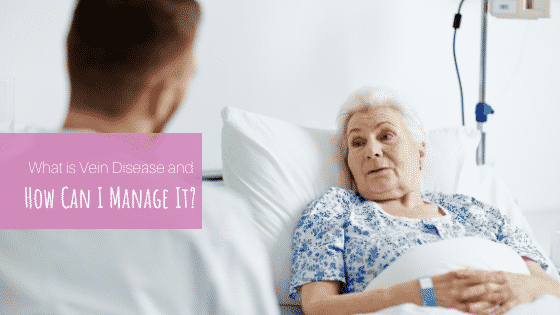
If you have ever noticed visible veins on your legs, you’ve probably wondered how they may affect your health and if they will affect your day-to-day existence. At Summit Skin and Vein Care, we do all we can to clear up any confusion or misinformation and answer any questions you may have about the subject.
What is Vein Disease?
Otherwise known as chronic venous insufficiency (CVI), varicose veins become visible when your legs don’t allow blood to flow back up to your heart. Typically, valves in your veins are supposed to ensure that blood flows toward your heart; however, when those valves don’t work as intended, blood can flow backward, causing blood to pool or collect in your legs.
If left untreated, varicose veins can cause a number of different symptoms. Although CVI is not life-threatening, it can be disabling and painful. Some of these symptoms may include:
- Varicose veins
- Leg ulcers
- Skin changes
- Pain
- Cramps
- Swelling
Many ask to know if they are at risk or may be more likely to have this condition? Here are some pre-qualifiers, so to speak:
- Pregnancy
- Obesity
- Family history of CVI
- Previous damage to your leg, due to injury, surgery, or blood clots
- High blood pressure in leg veins, over time, due to sitting or standing for long periods
- Lack of exercise
- Smoking
- A blood clot in a deep vein, typically in the calf or thigh (deep vein thrombosis)
- Swelling & inflammation of a vein close to the skin, often in the legs (phlebitis)
Lastly, there are a few symptoms of chronic venous insufficiency that can be confused with other issues if untreated or left undiagnosed. Because these symptoms may be confused with other health conditions, speak with your healthcare provider for an official diagnosis:
- Varicose veins
- Painful leg cramps or muscle spasms (charley horse)
- Leg ulcers that can be difficult to treat
- Urge to move your legs (restless leg syndrome)
- Brown-colored skin, near the ankles
- Pain when walking that stops when you rest
- Tightness in your calves or itchy, painful legs
- Swelling in your legs or ankles
All this information is helpful, but how can you know for sure if you have vein disease? The only way to be certain you have CVI is by being diagnosed by a doctor. Your healthcare provider will do a physical exam, which will include checking for swelling and asking you to describe pain or aching in your legs if you have any. You may also need an ultrasound test to see if the valves in your veins are functioning properly or if there is evidence of a blood clot.
The next step of the diagnostic test is to run a small, hand-held device called a transducer against the skin of your legs. The transducer will transmit images of veins in your legs to a computer monitor in order to allow a technician and doctor to examine them.
What is the Best Way to Manage My Vein Disease?
There are a number of home-based, DIY methods for managing CVI if it’s still in its earliest stages. Here are some basic preventative measures you can take to minimize how much CVI affects your life:
- Avoid long stretches of time spent standing or sitting
- Exercise on a regular basis
- Maintain a healthy weight
- Elevate your legs, while sitting or lying down
- Wear compression socks or stockings
- Take antibiotics, if needed, to help treat skin infections
- Practice skin hygiene by using moisturizer and hydrocortisone cream, if necessary
The aim of self-management is to reduce the pooling of blood in the legs as much as possible, as well as to prevent ulcers in the legs.